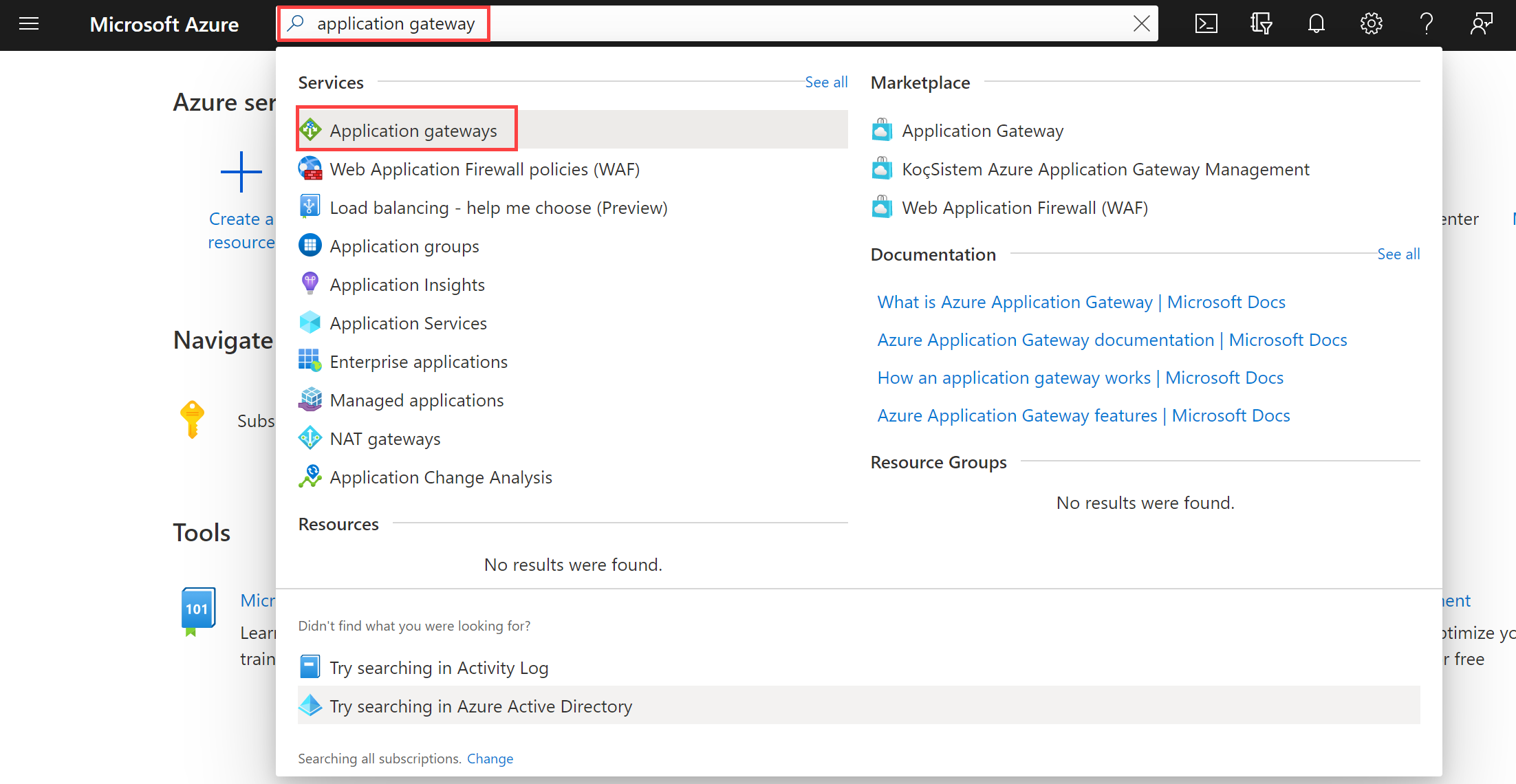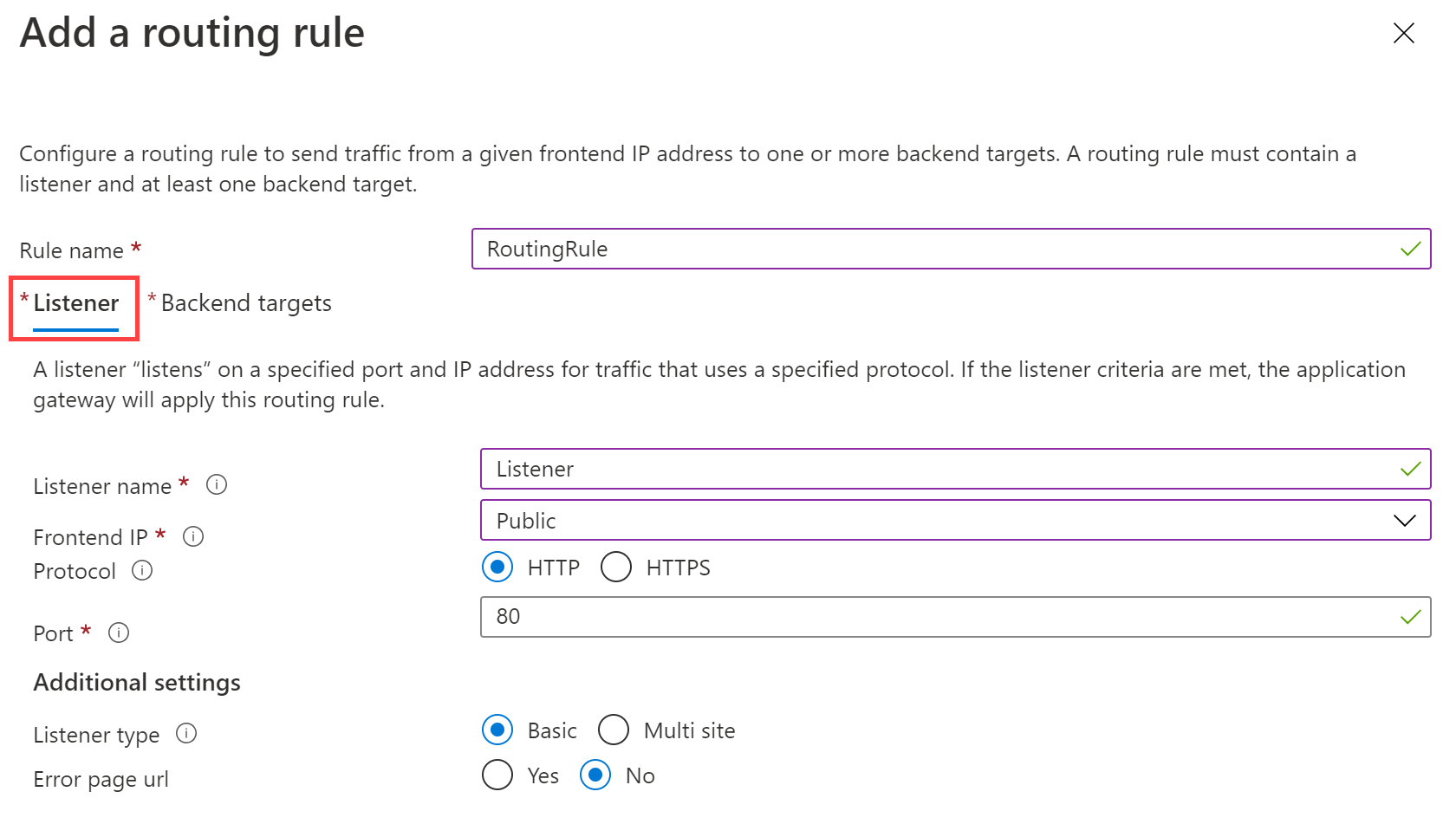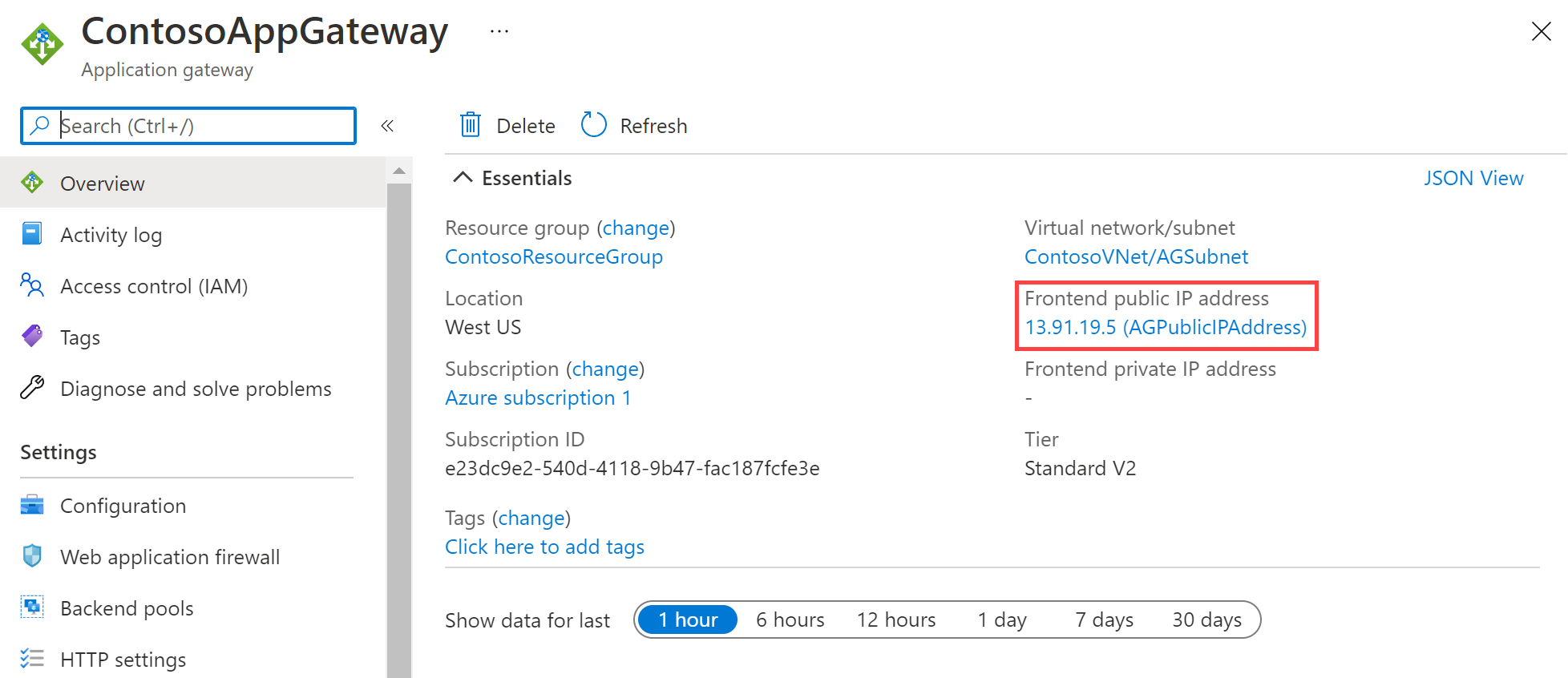Azure-Advanced-Networking
M05-Unit 4 Deploy Azure Application Gateway
In this exercise, you use the Azure portal to create an application gateway. Then you test it to make sure it works correctly.
Note: An interactive lab simulation is available that allows you to click through this lab at your own pace. You may find slight differences between the interactive simulation and the hosted lab, but the core concepts and ideas being demonstrated are the same.
Estimated time: 25 minutes
The application gateway directs application web traffic to specific resources in a backend pool. You assign listeners to ports, create rules, and add resources to a backend pool. For the sake of simplicity, this article uses a simple setup with a public front-end IP, a basic listener to host a single site on the application gateway, a basic request routing rule, and two virtual machines in the backend pool.
For Azure to communicate between the resources that you create, it needs a virtual network. You can either create a new virtual network or use an existing one. In this example, you’ll create a new virtual network while you create the application gateway. Application Gateway instances are created in separate subnets. You create two subnets in this example: one for the application gateway, and another for the backend servers.
In this exercise, you will:
- Task 1: Create an application gateway
- Task 2: Add a Subnet to the Virtual Network
- Task 3: Create virtual machines
- Task 4: Add backend servers to backend pool
- Task 5: Test the application gateway
Task 1: Create an application gateway
-
Sign in to the Azure portal with your Azure account.
-
On any Azure Portal page, in Search resources, services and docs (G+/), enter application gateway, and then select Application gateways from the results.

-
on the Application Gateways blade, click + Create then click Application Gateway..
-
On the Create application gateway Basics tab, enter, or select the following information: Leave other settings at their default settings.
Setting Value Subscription Select your subscription. Resource group Select Create new Name: ContosoResourceGroup Application Gateway name ContosoAppGateway Region Select East US Virtual Network Select Create new -
On the Create virtual network blade, enter, or select the following information:
Setting Value Name ContosoVNet ADDRESS SPACE Address range 10.0.0.0/16 SUBNETS Subnet name Change default to AGSubnet Address range 10.0.0.0/24 -
Select OK to return to the Create application gateway Basics tab.
-
Accept the default values for the other settings and then select Next: Frontends.
-
On the Frontends tab, verify Frontend IP address type is set to Public.
-
Select Add new for the Public IP address and enter AGPublicIPAddress for the public IP address name, and then select OK.
-
Select Next: Backends.
-
On the Backends tab, select Add a backend pool.
-
On the Add a backend pool window that opens, enter the following values to create an empty backend pool:
Setting Value Name BackendPool Add backend pool without targets Yes -
On the Add a backend pool window, select Add to save the backend pool configuration and return to the Backends tab.
-
On the Backends tab, select Next: Configuration.
-
On the Configuration tab, you’ll connect the frontend and backend pool you created using a routing rule.
-
On the Routing rules column, select Add a routing rule.
-
On the Add a routing rule blade, enter the following information:
Setting Value Rule name RoutingRule Priority 100 -
On the Listener tab, enter or select the following information:
Setting Value Listener name Listener Frontend IP Select Public IPv4 -
Accept the default values for the other settings on the Listener tab.

-
Select the Backend targets tab to configure the rest of the routing rule.
-
On the Backend targets tab, enter or select the following information:
Setting Value Target type Backend pool Backend Target (drop down list) Select BackendPool Backend Settings Add new -
In Add Backend Setting, enter or select the following information:
Setting Value Backend setting name HTTPSetting Backend port 80 -
Accept the default values for the other settings in the Add a Backend Setting window, then select Add to return to Add a routing rule.
-
Select Add to save the routing rule and return to the Configuration tab of the Create application gateway blade.
-
Select Add
-
Select Next: Tags and then Next: Review + create.
-
Wait for validation to complete.
-
Select Create to create the virtual network, the public IP address, and the application gateway.
It may take several minutes for Azure to create the application gateway. Wait until the deployment finishes successfully before moving on to the next section.
Task 2: Add an additional subnet to the ContosoVnet Virtual Network.
-
On any Azure Portal page, in Search resources, services and docs (G+/), enter virtual networks, and then select Virtual networks from the results.
-
In the Virtual networks blade: Select ContosoVnet
-
In the ContosoVnet blade, in the menu under Settings: Select Subnets
-
Select + Subnet
-
On the Add subnet blade: enter the following information: Accept all other default settings.
Setting Value Name BackendSubnet Subnet address range 10.0.1.0/24 -
Click Add.
Wait for the deployment to complete before moving on to the next task.
Task 3: Create virtual machines
-
On the Azure portal, open the PowerShell session within the Cloud Shell pane.
-
On the toolbar of the Cloud Shell pane, select Manage files and then Upload. Upload the following files:
backend.json,backend.parameters.json, andinstall-iis.ps1. -
The files are available for download from the repository, C:\Allfiles\M05 folder.
-
Deploy the following ARM templates to create the VMs needed for this exercise:
$RGName = "ContosoResourceGroup" New-AzResourceGroupDeployment -ResourceGroupName $RGName -TemplateFile backend.json -TemplateParameterFile backend.parameters.json -
When prompted for the adminpassword: enter Pa55w.rd1234abc.
Note: Do not close Cloud Shell.
- The command should complete successfully after a few minutes and list BackendVM1 and BackendVM2.
Install IIS on each virtual machine
-
Each backend server needs IIS installed.
-
Continue at the PowerShell prompt and use the provided script to install IIS on BackendVM1.
Invoke-AzVMRunCommand -ResourceGroupName 'ContosoResourceGroup' -Name 'BackendVM1' -CommandId 'RunPowerShellScript' -ScriptPath 'install-iis.ps1'Note: While you wait review the PowerShell script. Notice that the IIS home page is being customized to provide the virtual machine name.
-
Run the command again, this time for BackendVM2.
Invoke-AzVMRunCommand -ResourceGroupName 'ContosoResourceGroup' -Name 'BackendVM2' -CommandId 'RunPowerShellScript' -ScriptPath 'install-iis.ps1'Note: Each command will take a couple of minutes to complete.
-
Go to the Azure portal home page, and then select Virtual Machines.
-
Verify that both virtual machines have been created.
Task 4: Add backend servers to backend pool
-
On the Azure portal menu, select All resources or search for and select All resources. Then select ContosoAppGateway.
-
Under Settings, select Backend pools.
-
Select BackendPool.
-
On the Edit backend pool page, under Backend targets, in Target type, select Virtual machine.
-
Under Target, select BackendVM1-nic.
-
On Target type, select Virtual machine.
-
Under Target, select BackendVM2-nic.

-
Select Save.
Wait for the deployment to complete before proceeding to the next step.
Task 5: Test the application gateway
Although IIS isn’t required to create the application gateway, you installed it in this exercise to verify if Azure successfully created the application gateway.
Use IIS to test the application gateway:
-
Find the public IP address for the application gateway on its Overview page.

-
Copy the public IP address, and then paste it into the address bar of your browser to browse that IP address.
-
Check the response. A valid response verifies that the application gateway was successfully created and can successfully connect with the backend.

-
Refresh the browser multiple times and you should see connections to both BackendVM1 and BackendVM2.
Congratulations! You have configured and tested an Azure Application Gateway.
Clean up resources
Note: Remember to remove any newly created Azure resources that you no longer use. Removing unused resources ensures you will not see unexpected charges.
-
On the Azure portal, open the PowerShell session within the Cloud Shell pane.
-
Delete all resource groups you created throughout the labs of this module by running the following command:
Remove-AzResourceGroup -Name 'ContosoResourceGroup' -Force -AsJob
Note: The command executes asynchronously (as determined by the -AsJob parameter), so while you will be able to run another PowerShell command immediately afterwards within the same PowerShell session, it will take a few minutes before the resource groups are actually removed.